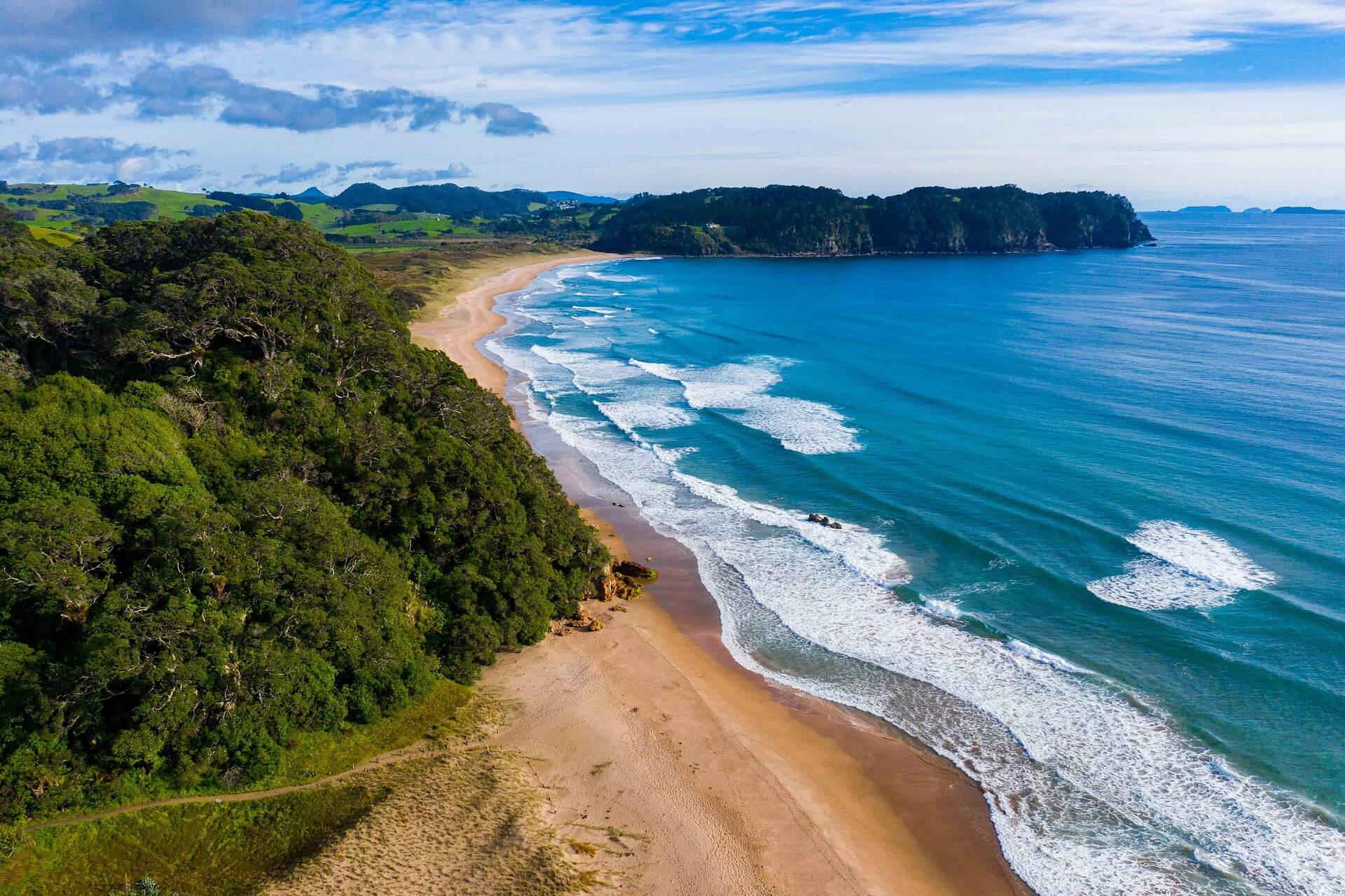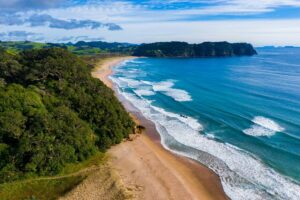Surf Lifesaving New Zealand has urged caution for beachgoers after a large number of inshore holes and troughs have caused “very strong” rip currents along the Coromandel coastline.
The warning comes after bystanders rescued five people who got caught in rip current at Mount Maunganui on March 8.
“This followed a similar incident at Waihī Beach earlier in the day with two people being rescued from strong rip currents, one of which was taken to hospital by helicopter,” Surf Life Saving New Zealand (SLSNZ) said.

SLSNZ said swimmers can identify rips by looking for calm patches in the surf with waves breaking either side, ripple patterns on the sand or underwater small holes beneath their feet, discoloured or foamy water and rocky headlands and rocky groynes.
“The calm gap may look safe to swim but a small patch of calm water in amongst surf or waves is often a rip current,” SLSNZ said.
“Rip currents are also common in areas with piers, jetties and anything else that sticks out from the beach that could catch a longshore current and cause it to start flowing away from shore.”
SLSNZ said if swimmers get caught in rips, they should firstly stay calm, relax and float to conserve energy.
“The rip current will not pull you under the water and is just taking you for a ride offshore.
“Try to fight the urge to swim back to shore against the current; this will use up energy that you need to stay afloat before help arrives.
“Most people can float for a lot longer than they can swim.”
SLSNZ said rip victims should secondly raise their hand to signal for help and then ride the rip until it stops so they could either swim back to shore or wait until help arrives.
“Remain floating until the current weakens, many rips will circulate and bring you back into shallower waters closer to the shore where you may be able to stand.
“When the current has subsided, and only if you are sure you can swim to the nearest point on the shore, should you attempt to swim to safety.”
SLSNZ also said lifeguards are only on patrol on weekends at some locations and beachgoers should visit the Safe Swim website, www.safeswim.org.nz, to find the nearest patrol location and when lifeguards are patrolling.




